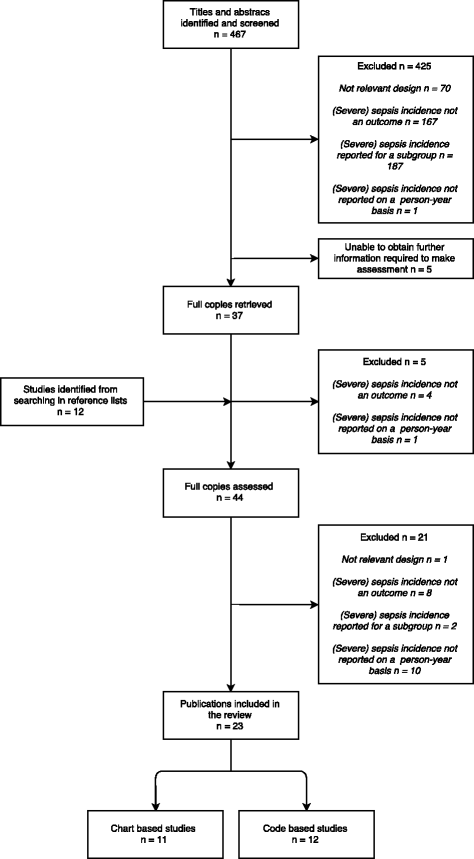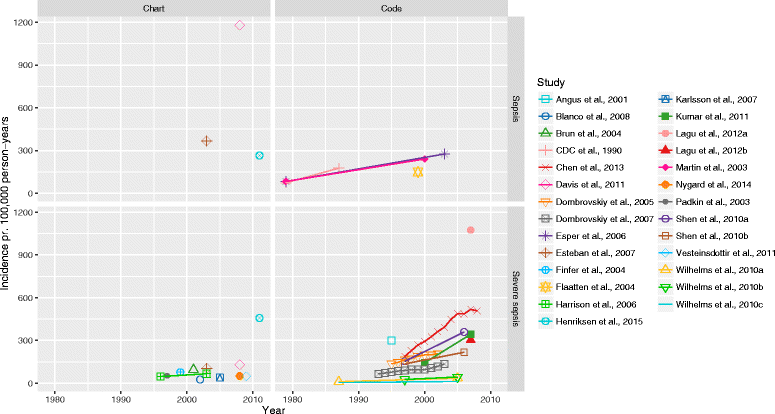Differences in reported sepsis incidence according to study design: a literature review
- PMID: 27733132
- PMCID: PMC5062833
- DOI: 10.1186/s12874-016-0237-9
Differences in reported sepsis incidence according to study design: a literature review
Abstract
Background: Sepsis and severe sepsis are common conditions in hospital settings, and are associated with high rates of morbidity and mortality, but reported incidences vary considerably. In this literature review, we describe the variation in reported population-based incidences of sepsis and severe sepsis. We also examine methodological and demographic differences between studies that may explain this variation.
Methods: We carried out a literature review searching three major databases and reference lists of relevant articles, to identify all original studies reporting the incidence of sepsis or severe sepsis in the general population. Two authors independently assessed all articles, and the final decision to exclude an article was reached by consensus. We extracted data according to predetermined variables, including study country, sepsis definition, and data source. We then calculated descriptive statistics for the reported incidences of sepsis and severe sepsis. The studies were classified according to the method used to identify cases of sepsis or severe sepsis: chart-based (i.e. review of patient charts) or code-based (i.e. predetermined International Classification of Diseases [ICD] codes).
Results: Among 482 articles initially screened, we identified 23 primary publications reporting incidence of sepsis and/or severe sepsis in the general population. The reported incidences ranged from 74 to 1180 per 100,000 person-years and 3 to 1074 per 100,000 person-years for sepsis and severe sepsis, respectively. Most chart-based studies used the Bone criteria (or a modification hereof) and Protein C Worldwide Evaluation in Severe Sepsis (PROWESS) study criteria to identify cases of sepsis and severe sepsis. Most code-based studies used ICD-9 codes, but the number of codes used ranged from 1 to more than 1200. We found that the incidence varied according to how sepsis was identified (chart-based vs. code-based), calendar year, data source, and world region.
Conclusion: The reported incidences of sepsis and severe sepsis in the general population varied greatly between studies. Such differences may be attributable to differences in the methods used to collect the data, the study period, or the world region where the study was undertaken. This finding highlights the importance of standardised definitions and acquisition of data regarding sepsis and severe sepsis.
Keywords: Epidemiology; Incidence; Method; Review; SIRS; Sepsis; Septicaemia; Severe sepsis.
Figures



References
-
- Bone RC, Balk RA, Cerra FB, Dellinger RP, Fein AM, Knaus WA, et al. Definitions for sepsis and organ failure and guidelines for the use of innovative therapies in sepsis. The ACCP/SCCM consensus conference committee. American college of chest physicians/society of critical care medicine. Chest. 1992;101:1644–55. doi: 10.1378/chest.101.6.1644. - DOI - PubMed
Publication types
MeSH terms
LinkOut - more resources
Full Text Sources
Other Literature Sources
Medical

